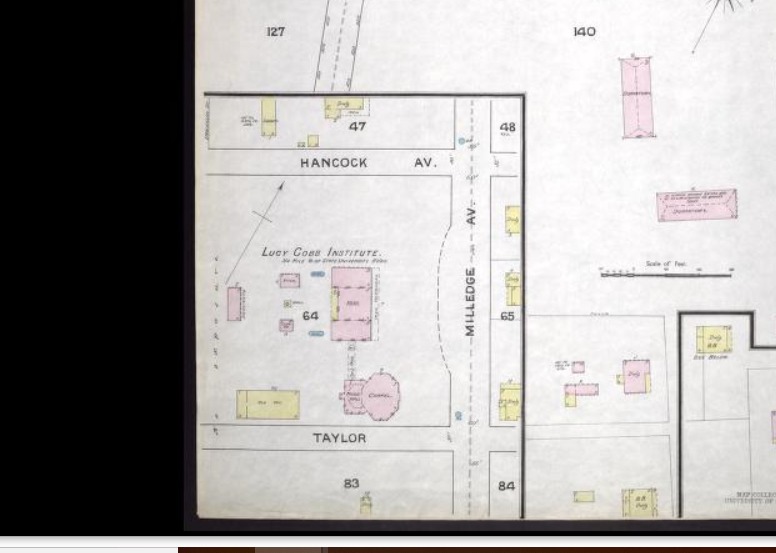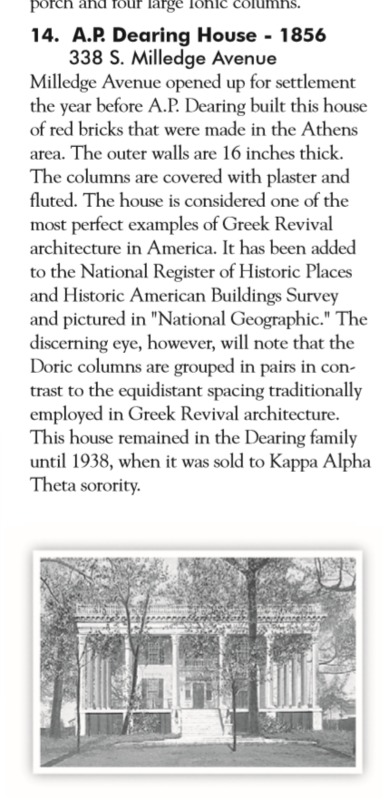Historic Milledge Avenue
Sanborn Fire Insurane Maps were originally created for fire insurance assesmant. The maps show the locations and use of buildings and the utilities available at the time. The fire insurance maps show detailed versions of the transformation of Athens overtime by the block. Milledge Avenue was named in the 1850s after a man named John Milledge. At the time many of the estates were owned by members of the agragarian community. After the railroad system was introduced to Athens in 1841, the town’s development and populatiion started to expand. Milledge Avenue grew alongside Athens and became one of the most prominent streets in Athens. In 1888, Milledge Avenue was present in a streetcar line which futher emphasized the important role that the development that this street played on the entire city. The line began as mule pulled cars until it was replaced by electric cars and is now replaced by a bus service. After the Great Depression, many people struffled to maintain the mansions because of economic conditions so many of the estates were sold to sororities. This started the gradual change of Milledge Avenue being occupied by single familiesm to social instituions. This fire insurance map was created in 1888. Milledge was nearly empty considering it had just recently been opened up for settlement in the early 1850s.
In 1856, approxiamtely a year after Milledge Avenue opened up for settlement, the A.P. Dearing house was built. It was built by A.P. Dearing, the son of a textile manugacturer. Because the changing economic conditions during the Great Depression, costs got too high forcing Katherine Dearing Godwin, Dearing’s granddaughter, to sell their home. The house was sold to Kappa Alpha Theta in 1938 and is “considered one of the most perfect examples of Greek Revival architecture in America” (Athens Welcome Center). This was one of the many homes that transitioned from a family home to a sociable insitution. This transition to more social institutions led to greater development in later years for Milledge Avenue. The district became populated by many resturants and companies to further accommodate to the social institutions that were taking over.

